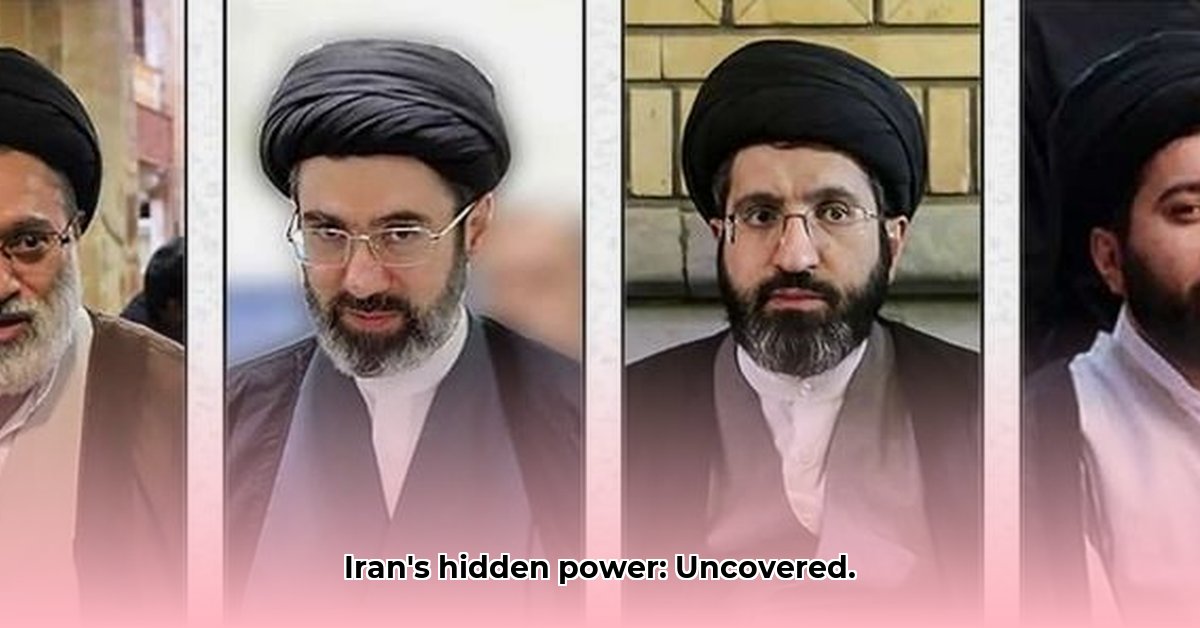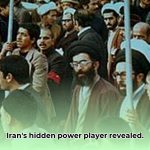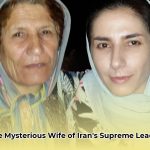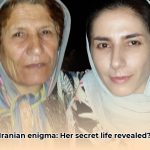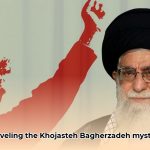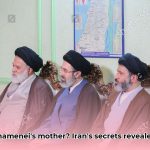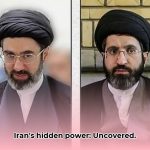Ever wonder what really goes on behind the scenes in Iran’s powerful political world? It’s usually pretty secretive, but some recent meetings involving Mansoureh Khojasteh Bagherzadeh, the wife of Iran’s Supreme Leader, are giving us a peek behind the curtain. For more on her background, see her biography. This article breaks down what happened, who’s involved, and what it all means for Iran’s future. We’ll look at how influential she really is compared to other key players, and how her actions might affect things like upcoming elections and changes to the legal system. It’s a complex situation, but we’ll make it easy to understand – giving you the inside scoop to better grasp what’s happening in this important part of the world.
Mansoureh Khojasteh Bagherzadeh: Unveiling Iran’s Power Dynamics Through Her Actions
The hushed whispers in Tehran’s political circles have grown louder lately, all thanks to some mysterious meetings. High-ranking figures, including Supreme Leader Ali Khamenei, Mansoureh Khojasteh Bagherzadeh (his wife and a figure of increasing interest), and potentially other key officials, have reportedly been meeting privately. These get-togethers, cloaked in secrecy, have ignited speculation about what’s really going on behind closed doors in Iran’s complex political world and its impact on government policies. Understanding these dynamics requires looking beyond the surface and examining the roles and relationships of those involved.
What exactly happened in these meetings? Details remain scarce. Iran isn’t exactly known for its open and transparent government; information is often tightly controlled. This secrecy is deliberate, a way to maintain power and avoid public scrutiny. However, the rumors persist, and the fact that these meetings happened at all is telling. While Bagherzadeh doesn’t hold a formal government position, her proximity to the Supreme Leader makes her a figure of influence. Could these meetings signal a subtle shift in the balance of power within the Iranian government? It’s a strong possibility within inner political circles.
The Murky Political Landscape of Iran
The Mysterious Meetings and the Shadowy World of Iranian Politics
The veil of secrecy surrounding these meetings highlights the inherent opacity of Iran’s political system. Information is released in a carefully controlled drip-feed, if at all. This isn’t accidental – it’s a deliberate strategy to control the narrative and prevent unwanted probing into the inner workings of the regime and Iranian election candidates. However, despite the efforts to keep things quiet, rumors and speculation persist, adding to the intrigue surrounding these events. The key is understanding that every action, or lack thereof, is a calculated move in a much larger game.
The Rare Interview: A Glimpse Behind the Curtain?
Adding another layer of complexity to this already tangled situation is a rare interview with Mansoureh Khojasteh Bagherzadeh that surfaced a few years ago. While such interviews are uncommon, they provide valuable insight into the personal life of a figure closely connected to Iranian politics. The interview depicts her life with Khamenei, portraying him as a caring husband, and talks about her favorite form of Islamic hijab. The wives of most Iranian politicians are almost invisible on Iran’s political scene but this rare interview provides insight into their lives.
Family Ties and Power: A Delicate Balance
The involvement, or perceived involvement, of Khamenei’s family adds another dimension to this complex picture. Several of his children and their spouses hold influential positions. This raises concerns about the intertwining of family and political power. Does family loyalty trump competence and merit in appointments? This question is key to understanding how Iranian politics truly works. Do these family connections represent a source of strength or a potential Achilles heel for the regime? It’s a question that only time (and potentially, leaks) may answer.
What Could These Events Mean? Looking Towards the Future
These unusual meetings aren’t isolated incidents; they’re part of a larger situation unfolding in Iran. What impact might this have on upcoming elections? Could these meetings foreshadow changes in judicial policies or overall government strategies? These questions are of vital importance. Experts will be closely monitoring Iranian politics over the next few months and even years to understand the full significance of these seemingly small, but potentially game-changing, events. Given the inherent secrecy of Iran’s political processes, it’s understandably difficult to make confident predictions. Yet, the combination of these meetings and the rare interview offers a glimpse into the subtle shifts in the country’s power structure.
Unanswered Questions and Future Research
To gain a thorough understanding of this unfolding story, several areas require further investigation:
| Area of Investigation | Potential Implications |
|---|---|
| Further Rare Interviews with Bagherzadeh | Could significantly impact public perception of Khamenei and his inner circle. |
| Political Affiliations of Participants | Uncovers potential alliances and power struggles within the regime. |
| Link to Upcoming Elections | Suggests potential influence on electoral outcomes and future policies. |
| Impact on Domestic/Foreign Policy | Could signal policy shifts or changes in governmental approaches. |
| Her connection with the Guardian Council | Reveal potential influence in electoral reforms in Iran |
The information we have now offers only a partial view of a complex political machine, one that operates largely in the shadows. Further developments are needed to piece together the full picture. The situation in Iran is fluid, and what seems insignificant today may hold enormous significance tomorrow. The ongoing investigation promises to yield deeper insights into Iran’s power dynamics.
How Might Mansoureh Khojasteh Influence Iranian Electoral Reforms?
While Mansoureh Khojasteh Bagherzadeh does not hold a formal government position, her role as the wife of the Supreme Leader gives her a unique position to influence Iranian politics. Her views and values are likely to be taken into consideration by her husband and other powerful figures in the regime.
Key Takeaways:
- Khojasteh’s potential influence stems from her close relationship with Supreme Leader Ali Khamenei.
- The opaque nature of Iranian politics makes it difficult to determine the exact extent of her influence.
- Understanding Khojasteh’s role requires analyzing the complex interplay between religious authority and political factions within Iran.
- Her potential influence on who’s elected could have profound impact on Iranian government policies.
Iranian Electoral Reforms
- Any views that she may hold on these subjects could therefore have an impact on the future development of the Iranian electoral system.
- The ongoing debate surrounding the succession of Supreme Leader Ali Khamenei adds another layer of complexity. Khojasteh’s position and potential allegiances could significantly influence the future trajectory of Iranian electoral reforms.
- International observers and analysts should closely monitor the Iranian government’s activity, recognizing Khojasteh’s potential impact on electoral processes.
Khojasteh and Potential Candidate Vetting
While Mansoureh Khojasteh does not directly vet candidates, her views on who is fit to lead can be influential to direct political discourse. Her views can be passed down through the Guardian Council and help shape electoral landscapes.
Her views aren’t always transparent, making it difficult to isolate Khojasteh’s individual impact. However, her participation in a body with such indirect powers inevitably means she plays a role shaping the electoral landscape.
Analyzing the Unseen: Challenges and Limitations
Analyzing Khojasteh’s influence is hampered by the lack of transparency surrounding the Iranian regime. This lack of openness creates significant challenges for researchers. The secretive nature of these processes makes it impossible to definitively determine the level of power she exerts in shaping electoral reforms. It’s like trying to understand a clock’s mechanism when you only see the hands moving.
Mansoureh Khojasteh Bagherzadeh’s Background
Key Takeaways:
- Mansoureh Khojasteh Bagherzadeh’s life remains largely private, with limited information available to the public.
- She comes from a religious Persian family with ties to prominent figures in Iranian society.
- Her marriage to Ali Khamenei in 1964 solidified her position within Iran’s political elite.
- Despite her influential position, she has maintained a low profile, rarely appearing in public or engaging in political activities.
Mansoureh Khojasteh Bagherzadeh was born in 1947 in Mashhad, Iran. Her father, Mohammad Esmaeil Khojasteh Bagherzadeh, was a well-known businessman in Mashhad, and her brother, Hassan Khojasteh Bagherzadeh, held a prominent position as the deputy director of IRIB (Islamic Republic of Iran Broadcasting).
She married Ali Khamenei in 1964, and their wedding was officiated by Ayatollah Mohammad Hadi Milani. Together, they have six children: Mostafa, Mojtaba, Masoud, Meysam, Boshra, and Hoda.
Despite her husband’s powerful position as the Supreme Leader of Iran, Mansoureh Khojasteh Bagherzadeh has maintained a private life, rarely appearing in public or engaging in political activities. Limited information is available about her personal views and activities, adding to the mystery surrounding her role within Iran’s political landscape.
[1]: https://www.atlanticcouncil.org/blogs/iransource/mojtaba-khamenei-iran-reform/ (Accessed: 2024-01-
- Unveiling the Enigma: Mansoureh Khojasteh Bagherzadeh’s Public Appearances & Private Life in Iran - July 18, 2025
- Unveiling the Mystery: Mansoureh Khojasteh Bagherzadeh’s Husband: A Rare Glimpse into a Private Life - July 18, 2025
- Unveiling Masoud Khamenei’s Mother: Power, Influence, and Iran’s Future - July 18, 2025
